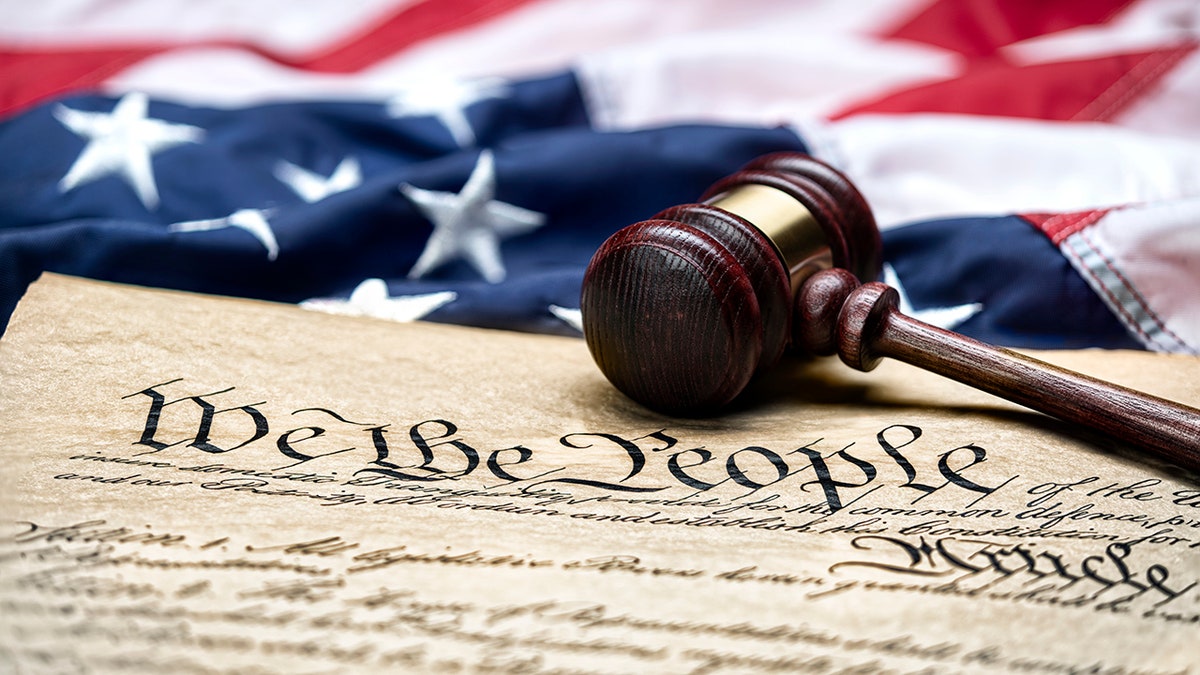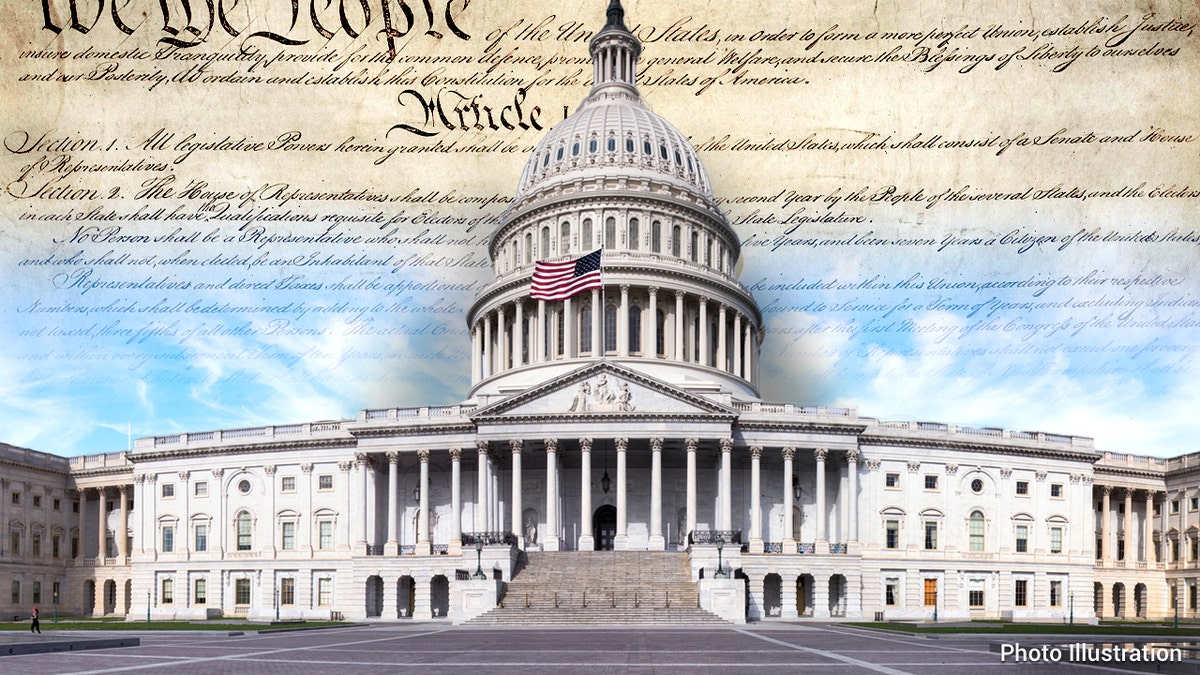How much do Americans know about the Constitution?
Brian Kilmeade hits the streets of New York City on Constitution Day to find out.
The United States Constitution laid the groundwork for the role of government in a newly formed nation. The monumental document was written over a period of several months, in secret among delegates, led by George Washington, at the Constitutional Convention in Philadelphia in 1787.
The need for a stronger federal government, as laid out by the Constitution, was revealed after the release of the Articles of Confederation, where the states were given most of the power. The Constitution effectively replaced its unsuccessful predecessor.
Below is a deeper look into the document that laid the groundwork for the government we know today.

The U.S. Constitution was ratified by nine of the 13 states, making it binding. (iStock)
- What is the Constitution?
- What are the main sections of the Constitution?
- What is the Bill of Rights?
1. What is the Constitution?
The Constitution is a document that was created to lay down the groundwork for the government and how it would operate. It was written in 1787 in Philadelphia, following the nation's Articles of Confederation.
"A chief aim of the Constitution drafted by the Convention was to create a government with enough power to act on a national level, but without so much power that fundamental rights would be at risk," WhiteHouse.gov states.
During the Constitution's development, how each state would be represented in government was heavily debated. The Virginia Plan was proposed by delegate Edmund Randolph. The plan proposed a government made up of three branches including legislative, executive, and judicial. Representation was based on a state's population.
William Paterson proposed the New Jersey Plan, which would provide each state an equal vote in Congress. The plan angled toward every state receiving equal power, no matter their size and population.
HOW WELL DO YOU KNOW AMERICA'S FOUNDING DOCUMENTS? WATCH ‘FOX NATION 101: THE CONSTITUTION’

The Constitution gave the government power, but still gave power to the people. (Fotosearch/Getty Images)
These plans led to the Great Compromise, which created the House of Representatives, based on population, and the Senate, where states would be represented equally.
The Constitution was originally written in 1787, but shortly thereafter, it needed to be ratified by nine of the 13 states for it to be put into effect. In order to encourage the ratification of the Constitution, James Madison, Alexander Hamilton and John Jay wrote the Federalist Papers, a collection of 85 essays, published anonymously, that outlined the need for the new government structure.
The Constitution was ratified in 1788, when nine states had approved the document, but it wasn't until 1790 when the last of the original 13 states, Rhode Island, gave its approval.
2. What are the main sections of the Constitution?
The Constitution begins with the preamble, which summarizes the purpose of the document. The preamble reads as follows.

The Constitution begins with the preamble, outlining the purpose of the document. (iStock)
"We the People of the United States, in Order to form a more perfect Union, establish Justice, insure domestic Tranquility, provide for the common defense, promote the general Welfare, and secure the Blessings of Liberty to ourselves and our Posterity, do ordain and establish this Constitution for the United States of America."
The preamble is followed by seven articles. The first three articles of the Constitution cover the three branches of government, the legislative, executive and judicial branches. The fourth article goes over the states and their relationship to the federal government and the fifth details the amendment process. The sixth article covers debts, supremacy and oaths and the last describes the ratification process.
The Constitution has not remained the same since its publishing date in 1787. The first amendments to the document came with the addition of the Bill of Rights in 1791.
3. What is the Bill of Rights?
The Bill of Rights includes the first ten amendments to the Constitution. These amendments were written by James Madison and highlight the rights of the American people. The following is a summary of the Bill of Rights.
CLICK HERE TO GET THE FOX NEWS APP

The Bill of Rights is the first 10 amendments to the Constitution. (Getty Images)
- First Amendment: Freedom of religion, freedom of speech, freedom of the press and freedom of assembly.
- Second Amendment: The right to bear arms.
- Third Amendment: Restricts the quartering of soldiers in private homes without the consent of the owner.
- Fourth Amendment: Protects against unreasonable search and seizure.
- Fifth Amendment: Right to a jury trial, protects against "double jeopardy" (being punished for the same criminal act more than once), and self-incrimination, gives the right to a fair trial and protection against taking of property by the government.
- Sixth Amendment: The right to a speedy trial by an impartial jury.
- Seventh Amendment: Guarantees a jury trial in cases that exceed a certain dollar amount.
- Eighth Amendment: Prohibits excessive bail or fines as well as cruel and unusual punishment for crimes.
- Ninth Amendment: Addresses rights, possessed by the people, that are not specifically mentioned in the Constitution.
- 10th Amendment: Powers not delegated to the United States by the Constitution, nor prohibited by it to the states, are reserved to the states respectively, or to the people.
Since the beginning of the Constitution, 27 amendments have been ratified.






















